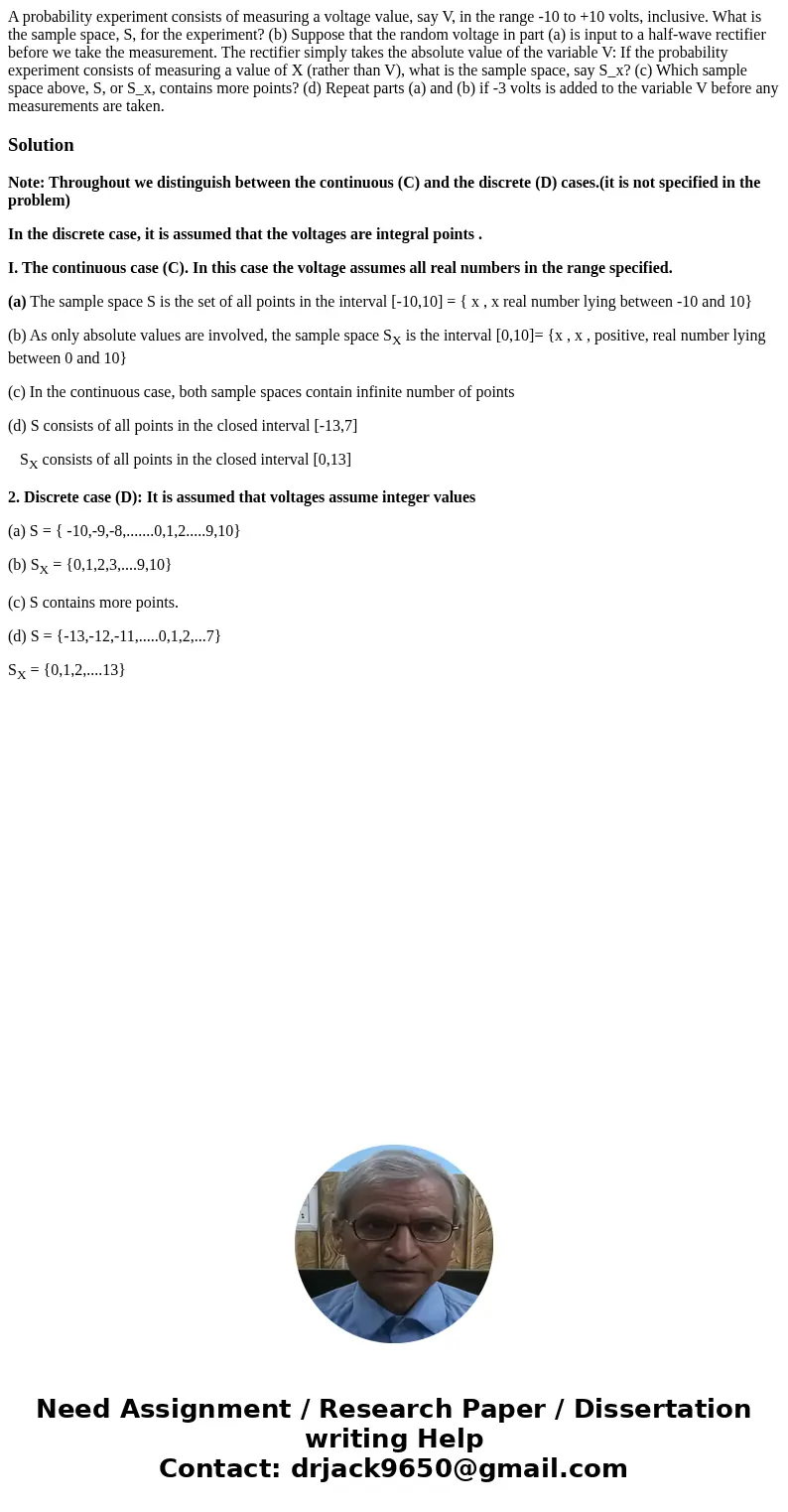A probability experiment consists of measuring a voltage val
Solution
Note: Throughout we distinguish between the continuous (C) and the discrete (D) cases.(it is not specified in the problem)
In the discrete case, it is assumed that the voltages are integral points .
I. The continuous case (C). In this case the voltage assumes all real numbers in the range specified.
(a) The sample space S is the set of all points in the interval [-10,10] = { x , x real number lying between -10 and 10}
(b) As only absolute values are involved, the sample space SX is the interval [0,10]= {x , x , positive, real number lying between 0 and 10}
(c) In the continuous case, both sample spaces contain infinite number of points
(d) S consists of all points in the closed interval [-13,7]
SX consists of all points in the closed interval [0,13]
2. Discrete case (D): It is assumed that voltages assume integer values
(a) S = { -10,-9,-8,.......0,1,2.....9,10}
(b) SX = {0,1,2,3,....9,10}
(c) S contains more points.
(d) S = {-13,-12,-11,.....0,1,2,...7}
SX = {0,1,2,....13}

 Homework Sourse
Homework Sourse